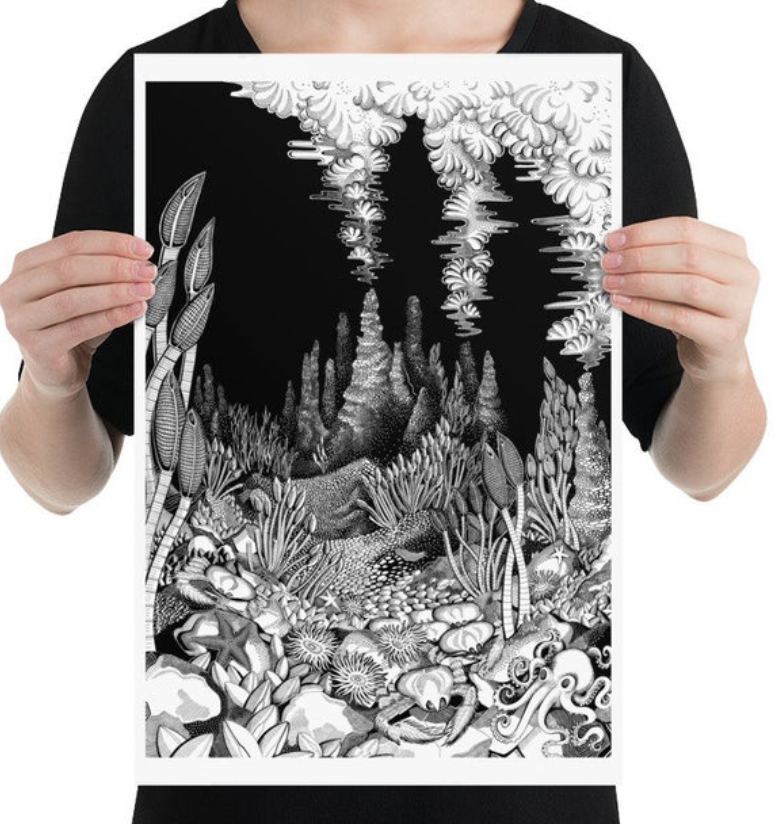Hydrothermal vent ecosystems

Hydrothermal vents are host to one of the most incredible ecosystem full of specialised deep sea creatures, such as those pictured here: Riftia pachyptila, tubeworms that houses endosymbiotic bacteria; Kiwa puravida, yeti crabs that cultivate chemosynthetic bacteria on their hairy claws and a little octopus known as Vulcanoctopus hydrothermalis, which lacks the octopus’ characteristic inksac.
Hydrothermal Vents form around fissures in the oceanic floor, where gases and metals escape from the underlying hot mantle. As these heated elements escape into the cold seawater, they become solid and form the chimneys that give hydrothermal vents their spooky and gothic feel. The most amazing thing about these habitats however is what they taught scientists about life, on earth and potentially beyond. While it was previously unquestioned that all life depends on the sun as a primary source of energy, and every imaginable food chain thus has to start with photosynthetic organisms, the teeming life and rampant biodiversity around these chimneys at the bottom of the sea however showed that there are other ways to skin a cat.
Chemosynthetic bacteria that live around these vents (either free-living or in close symbiosis with other organisms) can transform the hydrogen sulphide that is emitted in the clouds above the chimneys into organic matter. This is all the more astounding as hydrogen sulphide, the concoction of other elements and heavy metals and the extreme temperatures around these chimneys are lethal or at least very unpleasant to most organisms that we are familiar with. The discovery of these vents in 1979 therefore catalysed a novel, and much more open way of thinking about what circumstances, habitats and conditions could foster life, here, or in other corners of the universe.
The original is available, follow the link below to add it to your cart!

